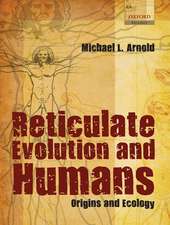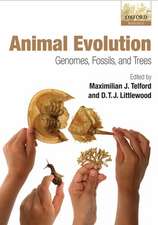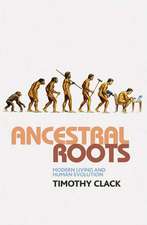Molecular Biology and Biotechnology of Extremophiles
Editat de R. a. Herbert, R. J. Sharpen Limba Engleză Paperback – 5 noi 2012
| Toate formatele și edițiile | Preț | Express |
|---|---|---|
| Paperback (1) | 389.88 lei 6-8 săpt. | |
| SPRINGER NETHERLANDS – 5 noi 2012 | 389.88 lei 6-8 săpt. | |
| Hardback (1) | 587.67 lei 6-8 săpt. | |
| Blackie Academic and Professional – 30 noi 1991 | 587.67 lei 6-8 săpt. |
Preț: 389.88 lei
Nou
Puncte Express: 585
Preț estimativ în valută:
74.61€ • 77.61$ • 61.60£
74.61€ • 77.61$ • 61.60£
Carte tipărită la comandă
Livrare economică 15-29 aprilie
Preluare comenzi: 021 569.72.76
Specificații
ISBN-13: 9789401050098
ISBN-10: 9401050090
Pagini: 344
Ilustrații: XII, 331 p.
Dimensiuni: 152 x 229 x 18 mm
Greutate: 0.46 kg
Ediția:Softcover reprint of the original 1st ed. 1992
Editura: SPRINGER NETHERLANDS
Colecția Springer
Locul publicării:Dordrecht, Netherlands
ISBN-10: 9401050090
Pagini: 344
Ilustrații: XII, 331 p.
Dimensiuni: 152 x 229 x 18 mm
Greutate: 0.46 kg
Ediția:Softcover reprint of the original 1st ed. 1992
Editura: SPRINGER NETHERLANDS
Colecția Springer
Locul publicării:Dordrecht, Netherlands
Public țintă
ResearchCuprins
1 Biochemistry and molecular biology of the extremely thermophilic archaeobacteria.- 1.1 Introduction.- 1.2 Archaeobacterial phylogeny.- 1.3 Ecology of the thermophilic Archaea.- References.- 2 The molecular genetics and biotechnological application of enzymes from extremely thermophilic eubacteria.- 2.1 Introduction.- 2.2 Aerobic eubacteria.- 2.3 Anaerobic eubacteria.- 2.4 Other enzymes from anaerobic thermophiles.- References.- 3 Biotechnological prospects for halophiles and halotolerant micro-organisms.- 3.1 Introduction.- 3.2 Micro-organisms in the food industry.- 3.3 Production of commercially useful compounds.- 3.4 Future aspects.- References.- 4 Acidophilic bacteria: adaptations and applications.- 4.1 Introduction.- 4.2 Constraints on growth at acid pH.- 4.3 The diversity of the extreme acidophiles.- 4.4 The bacterial extraction of metals from mineral sulphides.- 4.5 Molecular genetic studies of acidophiles.- 4.6 Concluding comments: diversity, identification and applied molecular biology.- References.- 5 Alkaliphiles: ecology and biotechnological applications.- 5.1 Introduction.- 5.2 Alkaliphiles and industry.- References.- 6 Physiology and biotechnological potential of deep-sea bacteria.- 6.1 Introduction.- 6.2 Deep-sea bacteria.- 6.3 Hydrothermal vents.- 6.4 Biotechnology of deep-sea bacteria.- References.- 7 Physiology and molecular biology of psychrophilic micro-organisms.- 7.1 What are psychrophiles and psychrotrophs?.- 7.2 Microbial types of psychrophiles.- 7.3 Ecology of psychrophiles and psychrotrophs.- 7.4 Molecular mechanisms of adaptation to low temperature.- 7.5 Biotechnological uses and potential of psychrophiles.- References.- 8 Molecular biology and biotechnology of microbial interactions with organic and inorganic heavy metal compounds.- 8.1 Introduction.- 8.2 Physiology of metal-microbe interactions.- 8.3 Molecular biology of heavy metal tolerance.- 8.4 Biotechnological aspects of metal-microbe interactions.- References.- 9 Molecular biology of radiation-resistant bacteria.- 9.1 Introduction.- 9.2 Types of radiation.- 9.3 Radiation resistance of bacterial species.- 9.4 Repair of radiation damage: mutation rates and mutagens.- 9.5 The biology of the Deinobacteriaceae.- 9.6 Shuttle plasmids between D. radiodurans and E. coli.- 9.7 Gene expression in the deinococci.- 9.8 Prospects in molecular biology.- 9.9 Biotechnology of the deinococci.- 9.10 Prospects for biotechnology.- References.- 10 Obligate anaerobes and their biotechnological potential.- 10.1 Introduction.- 10.2 The industrial exploitation of anaerobic fermentations.- 10.3 Anaerobic disposal of organic wastes.- 10.4 Anaerobic biotransformations.- 10.5 Anaerobic enzymes as industrial products.- 10.6 Molecular genetics of anaerobic bacteria.- References.- Species index.
Recenzii
Aims to provide a compresensive review of the current understanding of the meachanisms that extremophiles hav evolved to survive and grow in particular extreme environments, and how these may be exploited for biotechnological processes. - British Book News; This is essential reading for anyone working with these unusual and at times exasperating organisms...This is an excellent book which should find favour with experienced research workers, post-graduates, undergraduates and those of us who teach in these areas. Society for General Microbiology Quarterly















